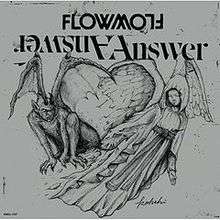Please tell us which country and city you'd like to see the weather in.

Meu
The Meu (French: le Meu) is an 84.8 km (52.7 mi) long river in the Côtes-d'Armor and Ille-et-Vilaine départements, north western France. Its source is at Saint-Vran, 2.4 km (1.5 mi) west of the village. It flows generally southeast. It is a right tributary of the Vilaine into which it flows at Goven, 5.7 km (3.5 mi) northeast of the village.
Départements and communes along its course
This list is ordered from source to mouth:
Notes
References

22nd Marine Expeditionary Unit
The 22nd Marine Expeditionary Unit (22nd MEU) is one of seven Marine Expeditionary Units currently in existence in the United States Marine Corps. The Marine Expeditionary Unit is a Marine Air Ground Task Force with a strength of about 2,200 personnel. They are currently based out of Marine Corps Base Camp Lejeune, North Carolina and fall under the command of the II Marine Expeditionary Force. The 22nd MEU holds the distinction of being the most decorated of the Marine Corps' seven MEUs.
Mission
"Provide the United States with a forward-deployed, amphibious force-in-readiness capable of executing mission across the full spectrum of combat and military operations other than war."
Structure
The MEU consists of four basic elements:
Command Element (CE): Serves as the headquarters for the entire unit and allows a single command to exercise control over all ground, aviation and combat service support forces.
Ground Combat Element (GCE): Built around a Marine infantry battalion, the GCE is reinforced with tanks, artillery, amphibious vehicles, engineers and reconnaissance assets.

26th Marine Expeditionary Unit
The 26th Marine Expeditionary Unit (26th MEU) is one of seven Marine Expeditionary Units currently in existence in the United States Marine Corps. The Marine Expeditionary Unit is a Marine Air-Ground Task Force with a strength of about 2,400 personnel when full strength during deployment. The MEU consists of four major parts: a command element, a ground combat element, an aviation combat element, and a logistics combat element. Since its establishment in the early 1970s as the 26th Marine Amphibious Unit, the MEU has deployed extensively, and participated in numerous combat and contingency operations, as well as training exercises. The 26th MEU is based out of Marine Corps Base Camp Lejeune, North Carolina.
Current major subordinate elements
As of 6 December 2013, the 26th MEU is decomposed and does not have reinforcing commands. The following units participated in the MEU's deployment from March–November 2013:
Ground Combat Element: Battalion Landing Team 3/2
Answer
Generally, an answer is a reply to a question. It can be solution, a retaliation or a response to it.
In law, an answer was originally a solemn assertion in opposition to someone or something, and thus generally any counter-statement or defense, a reply to a question or response, or objection, or a correct solution of a problem.
In the common law, an answer is the first pleading by a defendant, usually filed and served upon the plaintiff within a certain strict time limit after a civil complaint or criminal information or indictment has been served upon the defendant. It may have been preceded by an optional "pre-answer" motion to dismiss or demurrer; if such a motion is unsuccessful, the defendant must file an answer to the complaint or risk an adverse default judgment.
In a criminal case, there is usually an arraignment or some other kind of appearance before the defendant comes to court. The pleading in the criminal case, which is entered on the record in open court, is usually either guilty or not guilty. Generally speaking in private, civil cases there is no plea entered of guilt or innocence. There is only a judgment that grants money damages or some other kind of equitable remedy such as restitution or a permanent injunction. Criminal cases may lead to fines or other punishment, such as imprisonment.

Answer (song)
Answer is FLOW's twelfth single. The A-Side was used as opening theme song for the drama Tantei Gakuen. It reached #7 on the Oricon charts in its first week and charted for 12 weeks. *
Track listing
References

Fugue
In music, a fugue (/fjuːɡ/ FEWG) is a contrapuntal compositional technique in two or more voices, built on a subject (theme) that is introduced at the beginning in imitation (repetition at different pitches) and recurs frequently in the course of the composition.
The English term fugue originated in the 16th century and is derived from the French word fugue or the Italian fuga. This in turn comes from Latin, also fuga, which is itself related to both fugere ("to flee") and fugare ("to chase"). The adjectival form is fugal. Variants include fughetta (literally, "a small fugue") and fugato (a passage in fugal style within another work that is not a fugue).
A fugue usually has three sections: an exposition, a development, and a final entry that contains the return of the subject in the fugue's tonic key. Some fugues have a recapitulation. In the Middle Ages, the term was widely used to denote any works in canonic style; by the Renaissance, it had come to denote specifically imitative works. Since the 17th century, the term fugue has described what is commonly regarded as the most fully developed procedure of imitative counterpoint.
Radio Stations - Meu
SEARCH FOR RADIOS
Podcasts:

